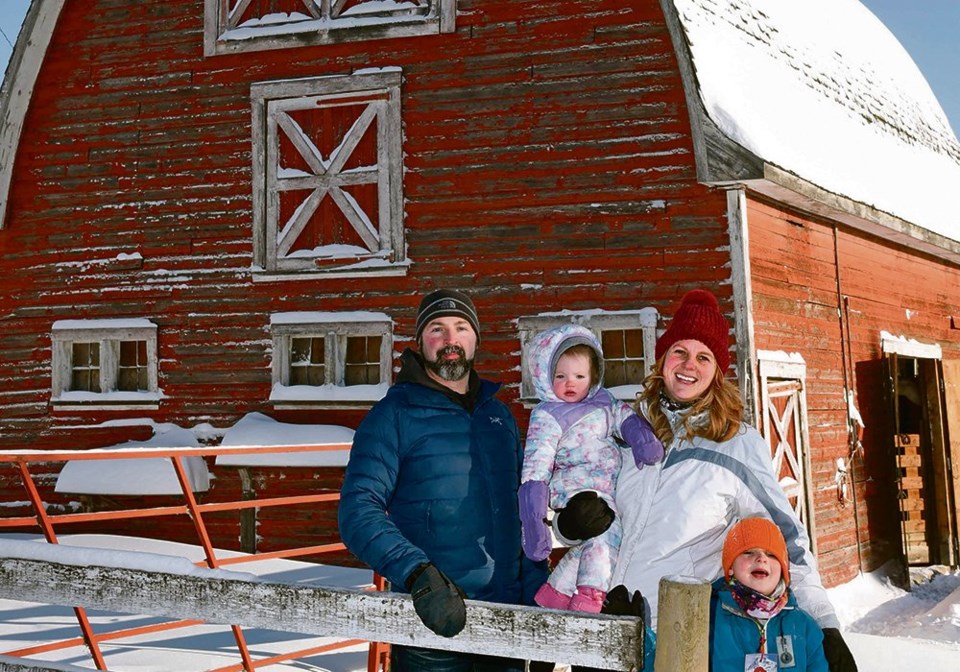HENRIBOURG, Sask. — Colin MacDonald has visited with thousands of farmers in more than 30 countries.
From Australia to Kazakhstan, Bulgaria to Finland and throughout all of Western Europe, MacDonald has a front-row seat into global farming practices thanks to his job as the international sales manager for Honey Bee Manufacturing.
“When I get somewhere in the world and a dealer distributor takes me out to meet a farmer, often fairly quickly in the conversation that dealer will mention to the farmer that, ‘oh, and he farms at home in Canada.’
“Well, that changes the tone of the visit and the conversation immediately. The first thing that farmer wants to do is quiz me about, ‘what do you do, how big is the farm, what crops do you grow?’ And so, it becomes a conversation between two farmers that may then circle back to the equipment that we’re there to talk about.”
MacDonald has also held a variety of roles with Deere and Company in product support and sales, as well as product development.
“Farmers are farmers are farmers everywhere in the world,” he said.
“Maybe we grow different crops, use slightly different equipment, speak different languages, have different cultures. Some of us watch hockey and football, some of us watch soccer and cricket. But fundamentally beneath that, all of us are on the land growing crops, interested in equipment and livestock, and what we do on the land and the lifestyles are a variation on the theme.”
MacDonald, his wife, Andrea, and children Graham, 5, and Alison, 1, live east of Henribourg at Sylvan Lake Farms. The name was used by his great-grandfather for the original 55 acres purchased in 1933, about 17 kilometres away.
The land had been rented out for years until MacDonald, with encouragement from his mother, Meg, started farming it.
“I took the plunge in 2017 to see if we could resurrect the old family farm and make a viable 21st century operation out of it. What we inherited was the name and 55 acres of cultivated land.
“We’re fourth generation farmers and first-generation farmers.”
The current land base comprises about 1,400 organic acres, 10 percent owned and the rest rented.
In 2021, the crop mix included yellow flax, red fife wheat, oats, yellow peas, forage peas, hemp, alfalfa and clover.
MacDonald said the farm has yet to post a profit.
“Absolutely everything on this farm has been bought and paid for or is being paid for, so essentially at this point, we put money into the farm. We don’t take any out. … It’s sort of a continual cash flow to try and keep the start-up farm going,” he said.
Empowered by the knowledge gained in his travels, MacDonald said he farms differently than many others in Western Canada.
“I was raised with the belief that farmland should be managed organically and sustainably. We firmly believe that we need to leave the land better for our children so we are constantly looking for ways to make our practices regenerative rather than simply sustainable. In this view, our farming plans include intercropping, livestock, carbon sustainability and tree planting,” he said.
Andrea agreed.
“I don’t know how many farmers think about farming the way Colin does in a sense that he’s the steward of the land and what can he do through his practices that helps the soil, that helps the land, that helps us produce better food, but more quality stuff and setting an example for our kids as far as a work ethic and healthy body, healthy living.”
MacDonald uses European equipment, such as a tine weeder, because it fits the size of his operation.
He and Andrea want to create a regenerative system to strengthen the farm’s soil.
“The absolute most important thing that we need to focus on is soil. If we don’t have healthy soils, we don’t have a farm. That’s the lens through which I look at everything we’re doing,” he said.
It’s why they intend to make livestock part of the operation as a way to close the nutrient cycle and reduce use of synthetic fertilizer and tillage.
“That’s one of the things we want to integrate long term onto the farm is cattle at a minimum, but probably more livestock than that, and have them rotationally grazing every acre.”
“Our carrying capacity at that point should be 200 plus cows, 500 sheep, 4,000 broilers and 300 layers,” said MacDonald.
With raising a family, growing a start-up farm and working an off-farm job, the MacDonalds have a full plate.
However, that doesn’t stop them from dreaming.
“One of my goals for the farm is to try and hit an optimal size where we make enough income off the farm that we can enjoy a comfortable lifestyle, but still have more time for family and kids than most people have who have a nine-to-five job.”
In the longer term, the MacDonalds want the farm, its soil, its animals and its finances to be healthy and viable if their children choose to take it over one day.
“There’s a lot of thinking and planning about how we can do better for the environment and for our family, have more family time and make things OK for our kids of what we’re leaving behind,” Andrea said.

